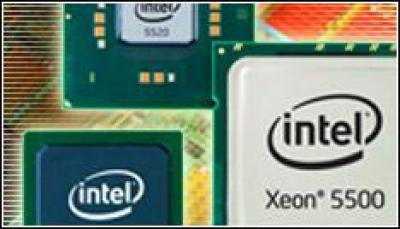Chip Market Grows But IDC Warns Of Economy Fears

New chips from Intel and AMD are driving semiconductor demand but IDC is worried about the economy
The semiconductor market is benefiting from a number growth drivers, says IDC, including new chips from Intel and Advanced Micro Devices, as well as continued adoption of Windows 7, and rising demand for smartphones.
However, there also are developments that will be a drag on the market over the next few years, including economic uncertainty in mature markets like the United States and Europe as well as emerging markets like China, Brazil and India, IDC analysts said in a report issued 21 July.
The result will be semiconductor revenue growth of 5 percent in 2012, down from the 9 percent increase expected in 2011, they said.
Modest Growth
IDC is projecting modest revenue growth in 2011, to $303 billion (£186bn). Demand for such products as mobile devices and Internet-connected products will continue to rise, but overall growth will be challenged, according to IDC analyst Mali Venkatesan.
“IDC also cautions that continued macroeconomic problems, such as persistent high unemployment with the associated low consumer sentiment in the US, the ongoing sovereign debt crisis, especially in Europe and the US, fear of recession in the US and Japan in 2012, and fear of high inflation in China, India and Brazil, will likely impact the semiconductor market negatively in 2012,” Venkatesan said in a statement. “But long-term secular growth – driven by end applications such as smart phones, media tablets, mobile PCs, set-top boxes, LCD TVs, wired networks, industrial automation and automotive infotainment – remains strong,”
The computing segment, which represents about 40 percent of all semiconductor revenues, is being buoyed by new chips launched this year by Intel and AMD. At the 2011 Consumer Electronics Show in January, both companies launched new architectures that offer high-level graphics capabilities integrated onto the same piece of silicon as the CPU, a move designed to increase performance while driving down power and cooling costs.
During their respective second-quarter earnings calls this week, executives from both vendors touted the fast adoption of their new offerings. Intel CEO Paul Otellini said 20 July that the company’s record-breaking revenue in the second-quarter was due in large part to sales of Intel’s new “Sandy Bridge” processors, which he said saw the fastest ramp of any product in the chip maker’s history. This year, two-thirds of the chips Intel sells will be based on Sandy Bridge, he said.
 For his part, Thomas Seifert, AMD’s CFO and acting CEO, said the rapid sales of the company’s initial Fusion APUs (accelerated processing units) were among the fastest in his company’s history. The “Brazos” processors, for lightweight notebooks and netbooks, are an “unqualified hit,” he said, selling 3 million units in the first quarter and another 6 million in the second. He expects a faster ramp of the company’s new “Llano” A-Series chips for mainstream notebooks.
For his part, Thomas Seifert, AMD’s CFO and acting CEO, said the rapid sales of the company’s initial Fusion APUs (accelerated processing units) were among the fastest in his company’s history. The “Brazos” processors, for lightweight notebooks and netbooks, are an “unqualified hit,” he said, selling 3 million units in the first quarter and another 6 million in the second. He expects a faster ramp of the company’s new “Llano” A-Series chips for mainstream notebooks.
“The success of the APUs demonstrate that we have the right strategy,” he said.
Windows 7 Driver
IDC analysts said the new chips and the continued adoption of Windows 7 by enterprises should still drive semiconductor demand in the computer segment into 2012. However, the rise of tablets – which primarily are powered by chips designed by ARM Holdings and built by Texas Instruments, Qualcomm, Nvidia and others – will offset some of that demand, they said.
The computing segment should see about 4 percent growth in 2012 and 5 percent annual growth between 2010 and 2015, IDC said.
In the communications industry – which includes telecoms – IDC analysts are calling for 7 percent revenue growth rates for both 2012 and between 2010 and 2015. Demand for smartphones will continue to be high, while other trends – including cloud computing, the rapid rise of IP traffic, more smart devices on networks and migration to next-generation wired networks – also will fuel growth in the communications segment.
The consumer segment will see what IDC called “tepid” growth of 5 percent revenue increases, with continued declining demand for such traditional devices as DVD players and fixed-game consoles, IDC said.